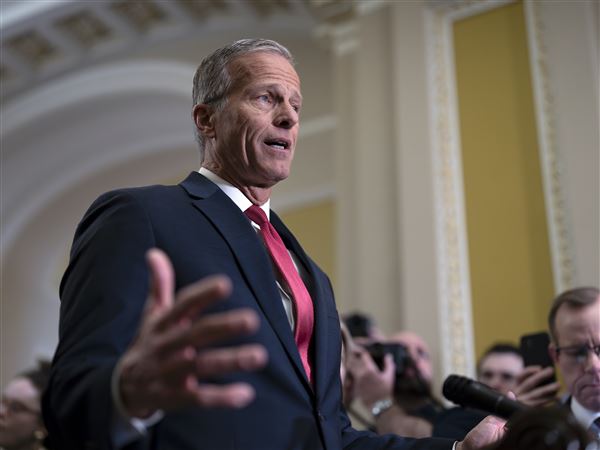If you’re lucky, you spent some time in the Laurel Highlands over the summer. Less than an hour from Pittsburgh, this region features steep, forested ridges, deep river valleys and countless small headwater streams.
Maybe you hiked next to Cucumber Run in Ohiopyle State Park and admired the spring wildflower show. Maybe you fished for native brook trout in the Middle Fork of Laurel Run, a classic mountain stream surrounded by thick laurel and rhododendron. Maybe you took a dip in Blue Hole Creek in Forbes State Forest. Regardless, your time in the Laurel Highlands almost certainly involved water — particularly our cold, forested headwater streams.
These headwater streams, special in their own right, are also vital to downstream water quality. Springs high on Laurel Ridge form Blue Hole Creek. It flows to Laurel Hill Creek which flows to the Casselman River. The Casselman meets the Youghiogheny River at Confluence. The Youghiogheny flows into the Monongahela. The Mon meets the Allegheny to form the Ohio River at Pittsburgh. The Ohio flows south for 982 miles before joining the Mississippi River. The Mississippi empties into the Gulf of Mexico.
What happens in Blue Hole and thousands of other tiny streams affects downstream water quality. Small streams provide drinking water, recharge groundwater,reduce pollutants, reduce erosion and provide protection from flooding.
The Clean Water Act was designed to protect the “waters of the United States.” For 30 years that meant small streams, like Blue Hole Creek, and wetlands that feed into larger rivers, lakes and bays.
But over the past decade, two confusing Supreme Court decisions in favor of developers called into question whether certain small streams and wetlands (such as Blue Hole Creek and streams that don’t flow all year) were protected. The polluter-friendly George W. Bush administration wrote a “guidance” document that codified those decisions.
As a result, an expensive, case-by-case determination about whether a stream or wetland merits protection is now often required. This puts the drinking water for more than one in three Americans at risk.
Clean Water Action, Mountain Watershed Association, Youghiogheny Riverkeeper and our allies across the country have been trying to put the Clean Water Act back together ever since. This spring, thanks to the Obama administration, we finally took a huge step in the right direction.
In March, the Environmental Protection Agency and the U.S. Army Corps of Engineers released a draft rule to make clear which streams and wetlands are protected by the Clean Water Act. When finalized, the proposal will make the Clean Water Act work as Congress intended by closing many of the polluter loopholes put in place by the Bush administration.
The proposal recognizes that all water is connected — from Blue Hole Creek to the Gulf of Mexico. It will align our landmark law with the way water works in the real world. We ALL live downstream.
There are over 10,000 miles of streams like Blue Hole Creek in Pennsylvania. The new rule will better protect them from pollution. These streams provide drinking water for 8 million Pennsylvanians — nearly two thirds of our state’s population.
Restoring this protection also will support jobs in the clean tech, recreation, craft-brewing and numerous other industries. For example, in 2011 alone, Pennsylvania residents and nonresidents spent $2.8 billion on wildlife recreation, including $485 million on fishing. So this rule is vital not only to the health of our streams and wetlands, but to our local economies as well.
Poll after poll shows that the vast majority of Americans get it. They support actions that put drinking water first. Scores of environmental, faith and community groups across the state, as well as political leaders such as Pittsburgh Mayor Bill Peduto, have shown their support for our economy and our quality of life.
We hope you’ll join us in making sure that the Obama administration hears loud and clear that the public supports this action for clean water. Through mid-November, you can submit a comment in support of this important proposal at www.cleanwateraction.org/protecting-all-water.
Tom Hoffman is Western Pennsylvania director of Clean Water Action, and Krissy Kasserman works with Youghiogheny Riverkeeper and the Mountain Watershed Association.
First Published: October 26, 2014, 4:00 a.m.














